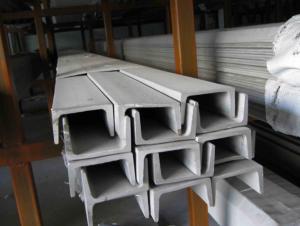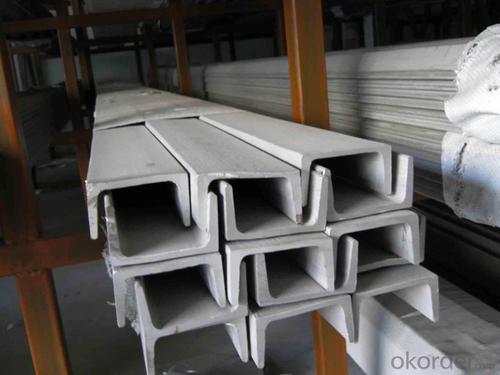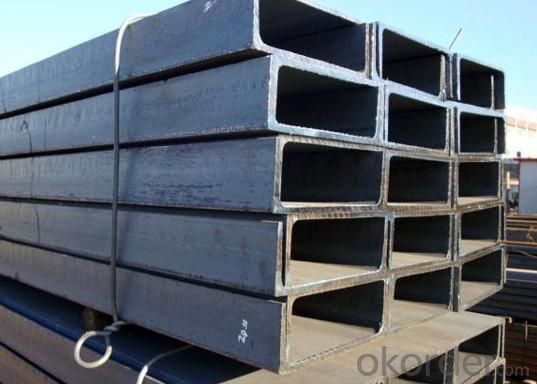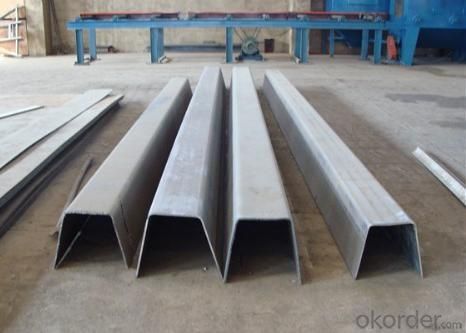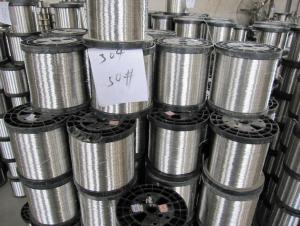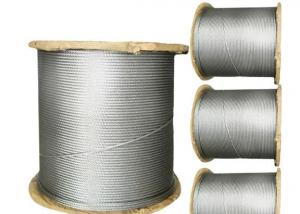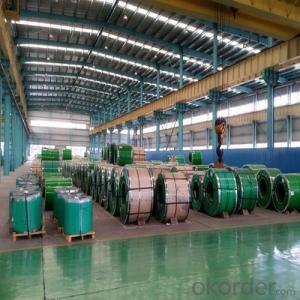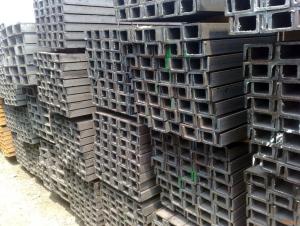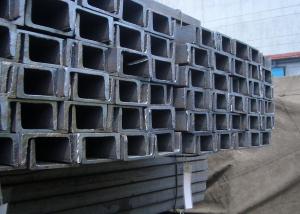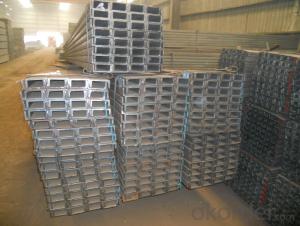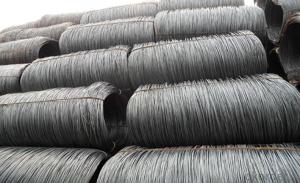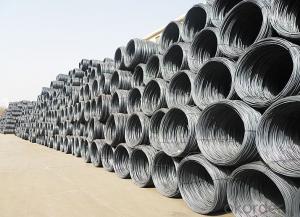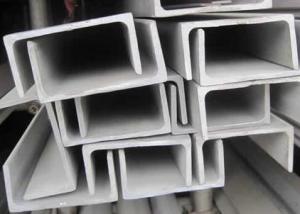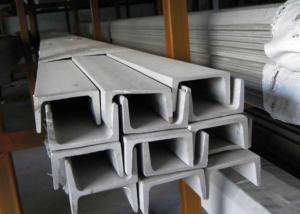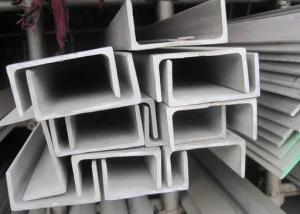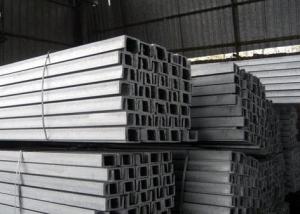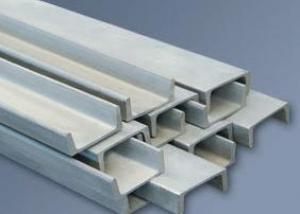Best Quality for Hot Sale Stainless Steel Channel
- Loading Port:
- China Main Port
- Payment Terms:
- TT or L/C
- Min Order Qty:
- 2MT m.t.
- Supply Capability:
- 3000MT Per Month m.t./month
OKorder Service Pledge
OKorder Financial Service
You Might Also Like
Details of Stainless Steel Channel:
Size MM | ||||
Thickness | Height | Width | ||
3 4 5 | 25 | 50 55 60 65 70 75 | ||
3 4 5 | 30 | 60 65 70 75 80 | ||
3 4 5 | 40 | 80 85 90 95 100 105 110 115 120 125 130 135 140 145 150 155 160 165 170 175 180 | ||
4 5 6 | 50 | 100 105 110 115 120 125 130 135 140 145 150 155 160 165 170 175 180 185 190 195 200 205 210 215 220 | ||
5 6 7 | 60 | 120 125 130 135 140 145 150 155 160 165 170 175 180 185 190 195 200 205 210 215 220 225 230 235 240 | ||
6 7 8 | 70 | 140 145 150 155 160 165 170 175 180 185 190 195 200 205 210 215 220 225 230 235 240 245 250 255 260 | ||
6 7 8 9 | 75 | 150 155 160 165 170 175 180 185 190 195 200 205 210 215 220 225 230 235 240 245 250 255 260 265 270 | ||
7 8 9 10 | 80 | 160 165 170 175 180 185 190 195 200 205 210 215 220 225 230 235 240 245 250 255 260 265 270 275 280 | ||
8 9 10 12 | 100 | 200 205 210 215 220 225 230 235 240 245 250 255 260 265 270 200 205 210 215 220 225 230 235 240 245 | ||
A276/A : ASTM A276/A 484M ,EN 10279 | ||||
Size MM | ||||
Thickness | Height | Width | ||
4 5 6 | 40 | 80 | ||
4 5 6 | 50 | 100 | ||
5 6 7 | 60 | 120 | ||
Tolerance: ASTM A276/A 484M , EN 10279 | ||||
Advantages of Stainless Steel Channel:
1. All products are made of high-quality imported raw materials.
2. Our products are certified by ISO9001:2008 authentication quality systems.
3. We are nominated as the AAA enterprise by Jiangsu government.
4. Quickest and most efficient Response to Your Enquiry.
Packing of Stainless Steel Channel:
1. Common Standard Export-sea Packing: Each bundle is fixed at least three times strips,
wrapped with durable PVC material.
2. Special Packing: Covered with film and packed in wooden box.

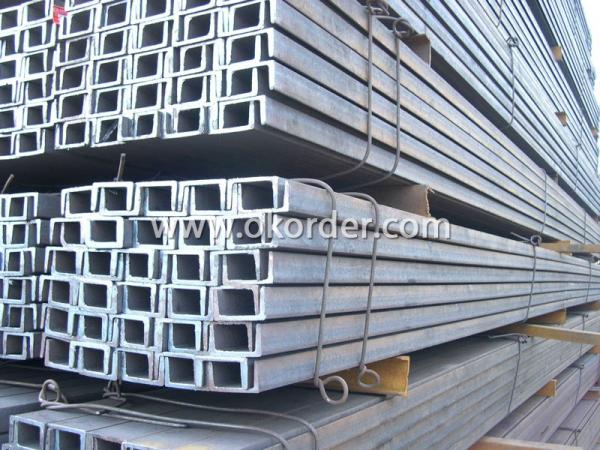
- Q: What are the different load classes available for stainless steel channels?
- Various applications, particularly in construction and structural engineering, commonly utilize stainless steel channels. These channels are designed to offer support and stability to structures. The load class of a stainless steel channel indicates its ability to withstand different loads. The specific manufacturer and industry standards can determine the range of load classes available for stainless steel channels. Generally, load classes are categorized based on the maximum load capacity of a channel. The following are some typical load classes for stainless steel channels: 1. Light Duty Load Class: This class is suitable for applications with relatively low loads, such as shelving, light-duty supports, and decorative purposes. Channels in this class are designed to withstand light loads and have a lower weight-bearing capacity compared to higher load classes. 2. Medium Duty Load Class: Channels in this class are designed to bear moderate loads. They are commonly used in applications like staircases, walkways, and support structures for equipment. Channels in this class are stronger and heavier than those in the light-duty load class. 3. Heavy Duty Load Class: This class is designed to withstand heavy loads and is commonly used in industrial and commercial applications. Channels in this class support heavy machinery, large structures, and high-stress areas. They possess a higher weight-bearing capacity and are constructed with thicker and stronger stainless steel. 4. Extra Heavy Duty Load Class: This load class is specifically intended for extremely heavy loads or high-stress applications. Channels in this class find use in industries such as mining, oil and gas, and heavy construction. They are constructed with the thickest and strongest stainless steel to provide maximum strength and durability. It is important to note that load classes may vary depending on the specific requirements of a project or industry. It is always advisable to consult with a structural engineer or refer to industry standards to determine the appropriate load class for a specific application.
- Q: Are stainless steel channels resistant to pitting and crevice corrosion?
- Stainless steel channels generally exhibit resistance to pitting and crevice corrosion. The excellent corrosion resistance of stainless steel is attributed to its high chromium content. Chromium reacts with oxygen to form a protective oxide layer on the surface of stainless steel, acting as a barrier against corrosion. This oxide layer has the ability to self-repair, meaning that if it becomes damaged, it can quickly regenerate and continue safeguarding the stainless steel from corrosion. Pitting corrosion occurs when small areas of the protective oxide layer are compromised, resulting in localized corrosion. Nevertheless, stainless steel channels are specifically engineered to have a smooth surface, reducing the likelihood of pitting corrosion. Moreover, the high chromium content in stainless steel enhances its resistance to pitting corrosion. Crevice corrosion occurs in confined spaces or crevices where stagnant electrolyte can accumulate, leading to localized corrosion. Stainless steel channels are generally designed with minimal crevices or tight spaces, minimizing the risk of crevice corrosion. However, it is crucial to ensure proper installation and maintenance of the channels to prevent the buildup of stagnant electrolytes. In conclusion, stainless steel channels exhibit high resistance to pitting and crevice corrosion, making them a durable and dependable choice for various applications that require corrosion resistance.
- Q: Can stainless steel channels be welded or soldered together?
- Yes, stainless steel channels can be welded together using various welding techniques such as TIG (Tungsten Inert Gas) welding or MIG (Metal Inert Gas) welding. However, soldering is not typically used for joining stainless steel channels as it requires a lower melting temperature than stainless steel.
- Q: Can stainless steel channels be used in high-pressure fluid or gas applications?
- High-pressure fluid or gas applications can utilize stainless steel channels. Stainless steel, a material highly resistant to corrosion and extremely durable, has the ability to endure high pressures and temperatures. Industries such as oil and gas, chemical processing, and food processing commonly utilize stainless steel due to their requirement for the transmission of fluids or gases at elevated pressures. In order to ensure the secure and efficient flow of fluids or gases under high-pressure circumstances, stainless steel channels are specifically designed to provide structural support and stability.
- Q: How do stainless steel channels compare to other stainless steel shapes like angles or beams?
- Stainless steel channels, angles, and beams are structural components frequently used in construction and industrial applications. Despite being made from the same material, there are notable distinctions between stainless steel channels and other shapes like angles or beams. To begin with, stainless steel channels possess a distinct shape that differentiates them from angles and beams. Channels are characterized by a C-shaped cross-section with two flanges and a connecting web. This design ensures exceptional structural support and stability, making channels suitable for applications that require strength and load-bearing capabilities. On the other hand, stainless steel angles have an L-shaped cross-section, with two legs meeting at a 90-degree angle. Angles are primarily employed for bracing, reinforcing corners, or constructing frameworks where structural stability is essential. They offer versatility and ease of welding, making them popular in construction and architectural designs. Stainless steel beams, also referred to as I-beams or H-beams, possess a distinctive H-shaped cross-section. These beams find wide usage in construction and heavy-duty applications due to their impressive strength-to-weight ratio. Beams are designed to bear heavy loads and provide structural support over long spans, making them ideal for large-scale projects like bridges, skyscrapers, or industrial structures. The choice between stainless steel channels, angles, or beams for a specific project depends on its requirements and usage. Channels excel at providing support over shorter spans or serving as structural components in machinery and equipment. Angles are commonly used for bracing and framing purposes, while beams are preferred for longer spans and applications with heavy loads. Moreover, the manufacturing process for each shape varies, resulting in differences in production costs and availability. Stainless steel channels are generally easier to produce compared to angles or beams, which may necessitate more intricate fabrication techniques. In conclusion, while stainless steel channels, angles, and beams each offer unique structural benefits, the decision of which to use depends on the project's specific requirements, load-bearing needs, span length, and overall design considerations. Consulting with a structural engineer or stainless steel expert can provide valuable insights and guidance in selecting the most suitable shape for a particular application.
- Q: Are stainless steel channels resistant to chemical cleaning agents?
- Yes, stainless steel channels are highly resistant to chemical cleaning agents due to their corrosion-resistant properties.
- Q: Are stainless steel channels available in pre-galvanized form?
- No, stainless steel channels are not available in pre-galvanized form.
- Q: What are the different installation methods for stainless steel channels?
- There are several installation methods for stainless steel channels, including bolted, welded, and adhesive methods. The bolted method involves securing the channels to a surface using bolts or screws. Welding involves permanently joining the channels to the surface through the use of heat and welding equipment. Adhesive methods involve using a strong adhesive to bond the channels to the surface, providing a secure and durable installation. The choice of installation method depends on factors such as the specific application, load requirements, and the desired aesthetic outcome.
- Q: What are the different connection methods for stainless steel channels?
- Some common connection methods for stainless steel channels include welding, bolting, and using adhesive or epoxy. Welding is a popular method as it provides a strong and permanent connection. Bolting is often used when disassembly may be required or for adjustable connections. Adhesive or epoxy can be used for non-structural applications or when a more aesthetic finish is desired.
- Q: Can stainless steel channels be used in the construction of loading docks?
- Yes, stainless steel channels can be used in the construction of loading docks. Stainless steel is a durable and corrosion-resistant material, making it a suitable choice for areas where there is a high risk of exposure to moisture, chemicals, or harsh weather conditions. Loading docks often experience heavy loads, frequent movement of equipment, and exposure to various elements, which can lead to wear and tear. Stainless steel channels are strong and can withstand these demanding conditions, providing structural integrity and longevity to the loading dock. Additionally, stainless steel has an aesthetically pleasing appearance, making it a popular choice for modern and clean-looking loading dock designs. Overall, stainless steel channels offer numerous benefits, including durability, corrosion resistance, and aesthetic appeal, making them a suitable option for use in the construction of loading docks.
1. Manufacturer Overview
| Location | Jiangsu, China |
| Year Established | 2010 |
| Annual Output Value | above US$8 million |
| Main Markets | East Asia, Middle East, West Europe |
| Company Certifications |
2. Manufacturer Certificates
| a) Certification Name | |
| Range | |
| Reference | |
| Validity Period |
3. Manufacturer Capability
| a) Trade Capacity | |
| Nearest Port | Shanghai |
| Export Percentage | |
| No.of Employees in Trade Department | above 50 people |
| Language Spoken: | English, Chinese, Arabic |
| b) Factory Information | |
| Factory Size: | about 15000 square meter |
| No. of Production Lines | above 4 |
| Contract Manufacturing | OEM Service Offered,Design Service Offered |
| Product Price Range | Average |
Send your message to us
Best Quality for Hot Sale Stainless Steel Channel
- Loading Port:
- China Main Port
- Payment Terms:
- TT or L/C
- Min Order Qty:
- 2MT m.t.
- Supply Capability:
- 3000MT Per Month m.t./month
OKorder Service Pledge
OKorder Financial Service
Similar products
Hot products
Hot Searches
Related keywords
